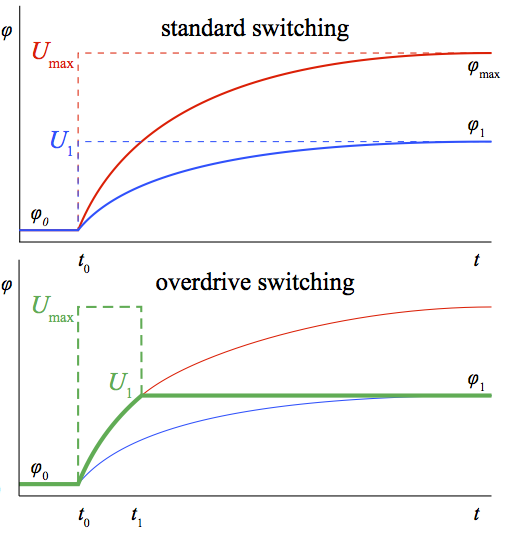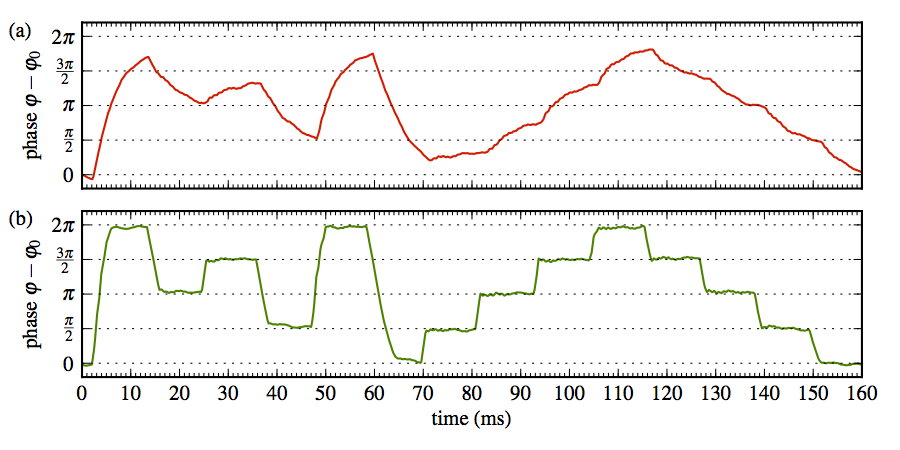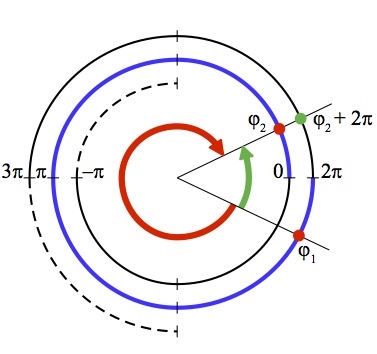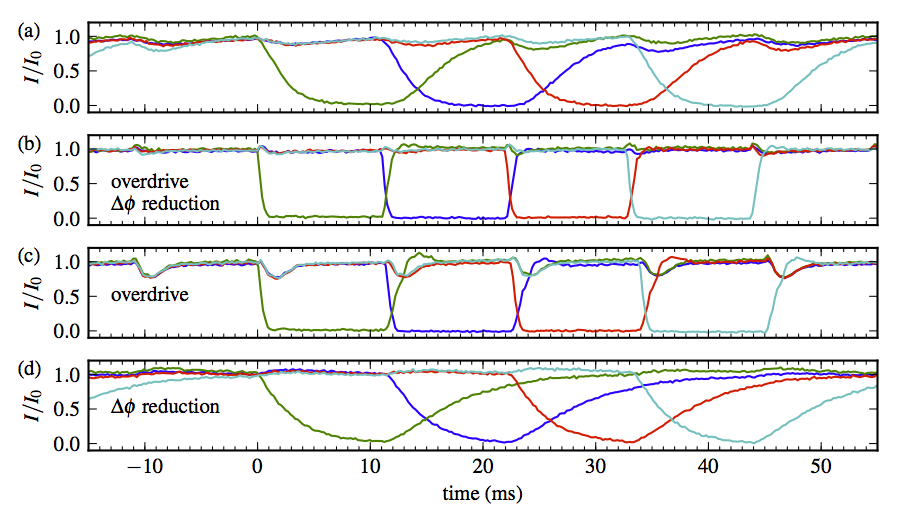Speeding up liquid crystal SLMs using overdrive with phase change reduction
One disadvantage of liquid crystal SLMs is their comparatively slow response time on the order of 10 ms. We have implemented a method for reducing the effective response time of a phase-only nematic liquid crystal SLM, achieving a speed-up, e.g., for holographic image projection from about 10 ms to 1 ms.
 |
|
Holographic image projection. Top: with overdrive and phase change reduction the transition happens within about 1 ms (see also inset with higher time resolution), while without overdrive it takes about 10 ms. |
Overdrive
One key component is an implementation of a real-time multi-frame overdrive method. To accelerate the transition from one phase value to another, the control voltage is set to the maximum or minimum value for some time, before switching to the value needed to realize the target phase in the steady state.
 |
As a result, the transition time between phase values is significantly reduced, especially for small phase changes:
 |
| Dynamic phase response of SLM without overdrive (top) and with overdrive (bottom). |
Our implementation employs an SLM (from Boulder Nonlinear Systems) with a fast update rate (2 kHz) for controlling the length of the overdrive period for each pixel individually. Furthermore, somewhat counter-intuitive, a maximum phase stroke larger than 2π is required to achieve optimum speed with overdrive.
Phase change reduction
The second key component is a simple but effective method to reduce the phase changes when switching from one SLM pattern to another. Since phase values that differ by 2π are equivalent, the idea is to switch to the nearest equivalent phase value and thereby reducing the phase change without altering the diffracted light field. This method requires an available phase range larger than 2π.
 |
| Phase change minimization: When a phase range larger than 2π is used, the phase change can be reduced. As an example, instead of switching from φ1 = 1.8π to φ2 = 0.2π (read arrow), it is much faster to switch to 2.2π (green arrow). |
Results
If both methods are applied together, we observe a significant speed up of the effective transition time and a reduction of intensity fluctuations during the transition.
 |
| Intensity traces for a diffracted light pattern consisting of six individual spots. When the overdrive and phase change reduction methods are applied simultaneously, transitions times are reduced to less than 1 ms and intensity fluctuations from 30% to less than 10%. |
Applications
Our implementation does not require any hardware modifications and can easily be applied to existing setups utilizing a similar SLM. This promises significant improvements for various applications where SLMs are used in a dynamic manner, such as optical trapping and micro-manipulation, adaptive optics, or aberration control. As an demonstration experiment we demonstrate an real-time control loop for beam position stabilization, running at 200 Hz.
Publication(s)
G. Thalhammer G., R.W. Bowman, G.D. Love, M.J. Padgett, and M. Ritsch-Marte: Speeding up liquid crystal SLMs using overdrive with phase change reduction, Optics Express 21, 1779-1797 (2013)



